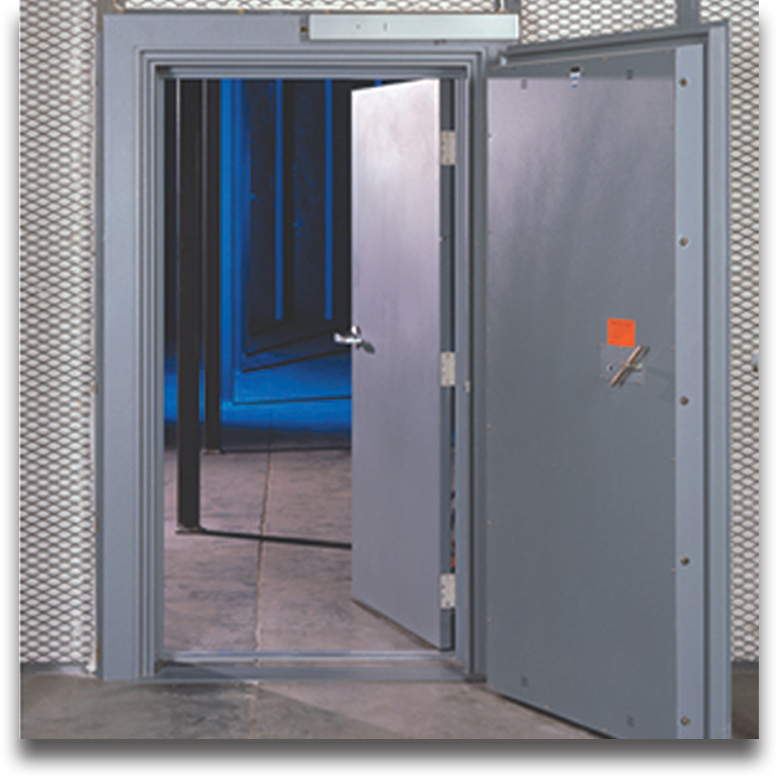When architects are tasked with designing a fireproof vault, their primary goal is to create a secure, fire-resistant, and functional space that meets the specific needs and requirements of their clients. The most important considerations for architects when designing a fireproof vault typically include:
1. Security: Ensuring the highest level of security is paramount when designing a fireproof vault. Architects work closely with security experts and consultants to implement access control measures, surveillance systems, and physical security features to protect the contents of the vault from theft and unauthorized access.
2. Fire Resistance: Fire resistance is a critical aspect of vault design. Architects must select fire-resistant construction materials, including fire-rated walls, ceilings, and floors, to provide protection against fire damage for a specified duration (e.g., 1 hour, 2 hours). They also integrate fire suppression systems and fireproof doors and seals to contain and mitigate the effects of fire.
3. Environmental Control: Depending on the contents of the vault, architects may need to design environmental control systems to maintain stable temperature and humidity levels within the vault. This is especially important for items like documents, artwork, and certain materials that are sensitive to environmental conditions.
4. Layout and Spatial Planning: Architects plan the layout of the vault to maximize space utilization while ensuring efficient access to stored items. They consider the size and arrangement of storage solutions, such as shelves, racks, and safes, to accommodate the client’s specific storage needs.
5. Accessibility: Accessibility is important, especially in commercial and public applications. Architects design the vault with features like ramps, wider doorways, and clearances to ensure that authorized personnel, including those with mobility challenges, can access the vault comfortably.
6. Structural Integrityhttps://firelock.com/government-legal-records-protection/: Architects work with structural engineers to ensure that the vault’s construction meets safety standards and load-bearing requirements. This includes assessing the structural integrity of the vault’s walls, ceiling, and floor.
7. Aesthetics: While security and functionality are top priorities, architects also consider the aesthetics of the vault. They select finishes, materials, and design elements that align with the overall look and feel of the building or facility, ensuring that the vault blends seamlessly with its surroundings.
8. Regulatory Compliance: Architects ensure that the vault design adheres to local building codes, industry standards, and regulations related to secure storage and fire protection. Compliance with these standards is essential for safety and legal reasons.
9. Integration of Security Features: Architects collaborate with security consultants to seamlessly integrate security features such as access control systems, surveillance cameras, and alarms into the vault’s design. These features should be user-friendly for authorized personnel.
10. Budget Considerations: Architects work within the client’s budget constraints to provide a cost-effective solution that meets security and fire protection requirements. They help clients make informed decisions about where to allocate resources.
11. Future Expansion and Flexibility: Architects may consider the potential for future expansion or reconfiguration of the vault to accommodate changing storage needs. This includes designing the vault in a way that allows for easy modifications or additions.
12. Maintenance and Sustainability: Architects may also think about the long-term maintenance of the vault and its sustainability features, such as energy-efficient lighting and materials.
The specific priorities and requirements for designing a fireproof vault can vary based on the client’s industry, the types of items to be stored, local regulations, and other factors. Therefore, architects work closely with clients and collaborate with experts from various fields to create a tailored solution that provides the highest level of protection and functionality.
FIRELOCK® provides these articles for information purposes only. We do not necessarily provide all products and services mentioned; they are for comparison purposes only. Always contact a professional about non-FIRELOCK® products and services mentioned.
About FIRELOCK®
Since 1982, FIRELOCK® has been the world’s leading manufacturer of media-rated modular vault chambers. Unlike poured-in-place concrete vaults, FIRELOCK® vaults are constructed from individual panels, filled with a heat-resistant ceramic material, and they are lightweight, movable, and expandable. When combined with current high-density storage systems, FIRELOCK® vaults offer extremely high space efficiency at a considerable cost advantage per cubic foot of storage. The value of assets stored in FIRELOCK® vaults today reaches hundreds of billions of dollars and ranges from priceless animation cells and World Wrestling Entertainment videos to pharmaceutical research records and U.S. Department of Education student loan information.
With a FIRELOCK® vault, you invest in the highest-performing vault on the market today to ensure the protection of your most vital records and irreplaceable items. You gain the ability to store microfilm, computer media, file servers, and paper in one location, as well as the peace of mind that comes from knowing that all the environmental- and fire-protection elements are in place.
FIRELOCK® has been in business since 1982, and we have installed over 2000 vaults around the world. Because of this broad experience, we know how to build a vault that will provide you with maximum protection today and the flexibility to grow with you into the future.
